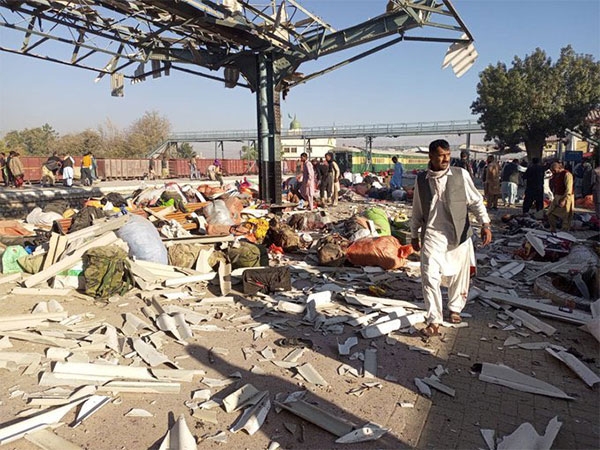Asbestos: more than 50 nations have banned it. Why is India refusing?

Last month, after a five-year struggle, the Bihar Pollution Board cancelled permissions for seven asbestos plants across the state due after incessant efforts from various activists group and the National Human Rights Commission (NHRC).
The activist groups had listened to the anxious villagers near the factories, especially in Bhojpur where a factory had employed more than 500. They complained of hazardous factories that manufactured chrysotile white asbestos-cement products. The toxic waste from the factories had been dumped indiscriminately in the adjoining villages and the agricultural fields.
One of the workers in the factory had also died after died due to a chronic lung disease (Asbestosis). The daughter of the worker had filed a case with the Human Rights Commission and they had ruled it in her favour.
Blanket ban
More than 50 nations, including all members of the European Union (EU), have banned all forms of asbestos, which the World Health Organization (WHO) says kills at least 1,07,000 people annually.
In India, however, asbestos-mining is banned by law and trade in asbestos waste including dust and fibre, is also banned. But the process of banning trade, manufacturing and use of chrysotile or white asbestos, is still held up in court.
Earlier this month, a paper titled Status of occupational health of workers in hazardous industries: An inquiry into asbestos and ship breaking industry published in the Labour & Development Journal by V. V. Giri National Labour Institute, the Ministry of Labour & Employment said, "The condition of the workforce is worse than the worst industrial sector - the mining industry. This dehumanisation linked to the externalisation of human cost by global and national companies. The workers of the hazardous industries constitute part of the community of fate to which all wretched of the earth belong with no remedy from occupational health crisis in sight."
The harsh conclusion is drawn from a study of employees and the environments in which these workers are compelled to work in, including the factories in Bhojpur.
But why hasn't it been banned already?
Activists attribute the law being lenient due to the corporate influence on the asbestos companies. Activists say the promotion of asbestos continues despite the fact that alternatives to asbestos are present.
The loopholes
The Environment Ministry's Vision Statement on Environment and Human Health reads, "Alternatives to asbestos may be used to the extent possible and use of asbestos may be phased out", but an Experts Appraisal Committee of the very same ministry continues to give environmental clearance to such hazardous industries.
The Labour Ministry, however, stated that way back in 2011, "The Government of India is considering the ban on the use of chrysotile asbestos in India to protect workers and the general population against primary and secondary exposure."
The other industry that employs the maximum number of workers to work under hazardous conditions and exposure to asbestos is the ship breaking industry.
The world's largest shipbreaking yard in Alang, Gujarat that employees an estimated 55,000 workers, forces employees to slave for long hours with full exposure to these lethal fibres. The government is aware of the risks, but it has not bothered to interfere.
Activist Gopal Krishna adds that these foreign shipowners have colonised Alang Beach and are now eying Mundra and the government is allowing it because it believes in the free trade of hazardous waste as well.
Matter of ships & beaches
After the NDA government came to power the ship breaking industry has been transferred from the Steel Ministry and entrusted to the Shipping Ministry. Foreign companies now find it easier to get clearances.
While the US government has maintained its long-standing policy that requires its own end-of-life ships to be treated domestically and disposed off their beaches, preventing loss of damage to the environment, India has been offering its biodiversity rich beaches for end-of-life ships to rich countries.
According to Krishna, many European countries have decided to keep their own beaches clean and export the process to developing countries like India, ruining our coastal ecosystem.
Mounting deaths
While there is no such estimate on the number of deaths due to asbestos in India, In the United States it has been blamed for some 2,00,000 deaths with $70 billion in damages and litigation costs.
In India, the numbers are only worse with it being the world's second largest asbestos market, behind only China, consuming around 3,50,000 metric tonnes a year on an average.
Studies show that the industry generates approximately $850 million a year in revenue, and employs about 3,00,000 people directly and supports as many as 3 million more.
The asbestos problem
Asbestos-related lung diseases are prevalent wherever the mineral is found even in minor quantities. Diseases are caused by exposure to asbestos fibres. The tiny fibres escape into the air, and when breathed in, can stay in your lungs for a long time. If the fibres accumulate in lungs they can lead to various diseases including skin cancer.
With even the Supreme Court denying an outright ban on asbestos, there is a lot of hope pinned on the Draft National Health Policy, 2015 which mentions "industrial and occupational safety" as an important parameter citing the need for structural measures to prevent preventable but incurable diseases "that are more prevalent in certain occupational groups".
Activists believe that this policy, if implemented in the right spirit, can at least pave the way for occupational health justice for hundreds of workers.
Edited by Jhinuk Sen
First published: 28 September 2016, 14:00 IST






![BJP's Kapil Mishra recreates Shankar Mahadevan’s ‘Breathless’ song to highlight Delhi pollution [WATCH] BJP's Kapil Mishra recreates Shankar Mahadevan’s ‘Breathless’ song to highlight Delhi pollution [WATCH]](https://images.catchnews.com/upload/2022/11/03/kapil-mishra_240884_300x172.png)

![Anupam Kher shares pictures of his toned body on 67th birthday [MUST SEE] Anupam Kher shares pictures of his toned body on 67th birthday [MUST SEE]](https://images.catchnews.com/upload/2022/03/07/Anupam_kher_231145_300x172.jpg)






